





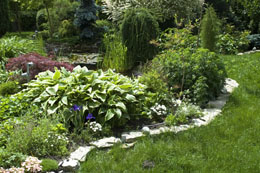 Shrubs are smaller than trees. They don't have a single stem, and they have several branches that make them look bushy. Low growing evergreen types are used for low hedges, or for defining the edges in all types of gardens. Small shrubs are an invariable part of formal and informal gardens. Evergreen and flowering shrubs are the most sought after varieties.
Shrubs are smaller than trees. They don't have a single stem, and they have several branches that make them look bushy. Low growing evergreen types are used for low hedges, or for defining the edges in all types of gardens. Small shrubs are an invariable part of formal and informal gardens. Evergreen and flowering shrubs are the most sought after varieties.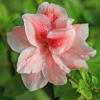 Azaleas, as ornamental plants, are not only preferred by home gardeners, but also by professional landscapers. They are available in a wide range of size, form, and color. There exist about 70 - 80 species of azaleas. Thousands of cultivars are used for landscaping. The Kurume hybrids grow to about 2 - 6 feet in height, with a spread of 2 - 5 feet. They grow better in loose and well-drained soil. Regular fertilization is essential for a best display. Flowers are lavender, pink, light pink, red, or white. They do not need bright sunlight, and may grow under trees. Some varieties produce hose-on-hose blossoms.Viburnum
Azaleas, as ornamental plants, are not only preferred by home gardeners, but also by professional landscapers. They are available in a wide range of size, form, and color. There exist about 70 - 80 species of azaleas. Thousands of cultivars are used for landscaping. The Kurume hybrids grow to about 2 - 6 feet in height, with a spread of 2 - 5 feet. They grow better in loose and well-drained soil. Regular fertilization is essential for a best display. Flowers are lavender, pink, light pink, red, or white. They do not need bright sunlight, and may grow under trees. Some varieties produce hose-on-hose blossoms.Viburnum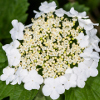 Native to Northern hemisphere, Viburnum rhytidophyllum is a popular evergreen species, known for its large, lustrous, deeply veined, oval, dark green, and leathery leaves that have wrinkled surfaces. It is commonly known as leatherleaf viburnum. It is a deciduous shrub, and belongs to the Adoxaceae family. It is loved for its evergreen foliage. It grows 6 - 10 feet tall. Very few pests can damage the shrub. It can also tolerate deep shade. These shrubs are good for hedges. They produce clusters of flowers that attract butterflies. The clusters of drupe-like fruits attract birds.Pachysandra
Native to Northern hemisphere, Viburnum rhytidophyllum is a popular evergreen species, known for its large, lustrous, deeply veined, oval, dark green, and leathery leaves that have wrinkled surfaces. It is commonly known as leatherleaf viburnum. It is a deciduous shrub, and belongs to the Adoxaceae family. It is loved for its evergreen foliage. It grows 6 - 10 feet tall. Very few pests can damage the shrub. It can also tolerate deep shade. These shrubs are good for hedges. They produce clusters of flowers that attract butterflies. The clusters of drupe-like fruits attract birds.Pachysandra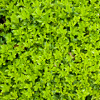 This shrub belongs to the Boxwood family, Buxaceae. They are the evergreen ground-covers for shady areas. These are described as sub-shrubs (dwarf shrubs). Underground runners help them to spread. The leaves are alternate and leathery. They are 5 - 10 cm long and have toothed margins. The height of the shrub can be between 8 - 18 inches. Pachysandra terminalis, or the Japanese Spurge is the most favorite species of gardeners. It can tolerate partial as well as full shade. It grows well in acidic and well-drained soil. Soil rich in humus can also provide better results.Boxwood
This shrub belongs to the Boxwood family, Buxaceae. They are the evergreen ground-covers for shady areas. These are described as sub-shrubs (dwarf shrubs). Underground runners help them to spread. The leaves are alternate and leathery. They are 5 - 10 cm long and have toothed margins. The height of the shrub can be between 8 - 18 inches. Pachysandra terminalis, or the Japanese Spurge is the most favorite species of gardeners. It can tolerate partial as well as full shade. It grows well in acidic and well-drained soil. Soil rich in humus can also provide better results.Boxwood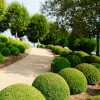 Buxus sempervirens is commonly known as boxwood. It is native to western and southern Europe. The leaves are glossy, rounded, or lanceolate. They are opposite and leathery too. These plants are excellent for using in hedging and topiaries. An expert gardener can cut them in any shape. The branches are densely packed, but they can be easily pruned and shaped. These shrubs are popular worldwide, as they can change the look of the garden significantly. "Winter bronzing" can be a problem for English Boxwood shrubs, but it doesn't kill these plants. Regular supply of water and protection from wind and sun in winter helps to prevent winter bronzing.Mountain Laurel
Buxus sempervirens is commonly known as boxwood. It is native to western and southern Europe. The leaves are glossy, rounded, or lanceolate. They are opposite and leathery too. These plants are excellent for using in hedging and topiaries. An expert gardener can cut them in any shape. The branches are densely packed, but they can be easily pruned and shaped. These shrubs are popular worldwide, as they can change the look of the garden significantly. "Winter bronzing" can be a problem for English Boxwood shrubs, but it doesn't kill these plants. Regular supply of water and protection from wind and sun in winter helps to prevent winter bronzing.Mountain Laurel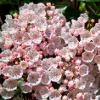 Flowering evergreen shrub, Kalmia latifolia is commonly known as Mountain Laurel or Spoonwood. It is a broad-leaf shrub that has lustrous green foliage. It produces attractive, round, white/light pink flowers in clusters. It grows well in the full sun, as well as partial shade. Height of the shrub can be 3 - 9 m. The leaves can be 3 - 12 cm long, and 1 - 4 cm wide. These shrubs are commonly found on the rocky slopes of mountains, which are covered with forests. Some varieties like Madeline produce double-layered flowers. Ingestion of the flowers, twigs, leaves, and pollen of mountain laurel should be avoided. The plant is poisonous for human beings and animals like sheep, cattle, horses, deer, etc.Rhododendron Bush
Flowering evergreen shrub, Kalmia latifolia is commonly known as Mountain Laurel or Spoonwood. It is a broad-leaf shrub that has lustrous green foliage. It produces attractive, round, white/light pink flowers in clusters. It grows well in the full sun, as well as partial shade. Height of the shrub can be 3 - 9 m. The leaves can be 3 - 12 cm long, and 1 - 4 cm wide. These shrubs are commonly found on the rocky slopes of mountains, which are covered with forests. Some varieties like Madeline produce double-layered flowers. Ingestion of the flowers, twigs, leaves, and pollen of mountain laurel should be avoided. The plant is poisonous for human beings and animals like sheep, cattle, horses, deer, etc.Rhododendron Bush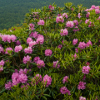 It can be an evergreen/deciduous shrub. There exist more than 28,000 cultivars of Rhododendron. Most of them are grown for the strikingly beautiful display of flowers. Some of them are grown for their attractive leaves and branches. Rhododendron arboreum is the national flower of Nepal. The people of this country love the sour taste of the flower. They consume it by extracting its juice, and also in a pickled form. They also add dried rhododendron flowers to fish curry. The leaves of this plant are large and broad; they can be as wide as 12 inches. This shrub is known for stunningly beautiful flowers and leaves. Red, yellow, and purple flowers can enhance the beauty of the hedges.Oleander Bush
It can be an evergreen/deciduous shrub. There exist more than 28,000 cultivars of Rhododendron. Most of them are grown for the strikingly beautiful display of flowers. Some of them are grown for their attractive leaves and branches. Rhododendron arboreum is the national flower of Nepal. The people of this country love the sour taste of the flower. They consume it by extracting its juice, and also in a pickled form. They also add dried rhododendron flowers to fish curry. The leaves of this plant are large and broad; they can be as wide as 12 inches. This shrub is known for stunningly beautiful flowers and leaves. Red, yellow, and purple flowers can enhance the beauty of the hedges.Oleander Bush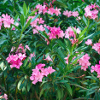 It is an evergreen shrub, but it is poisonous. Ingestion of any part of this plant should be avoided as it is poisonous to humans and animals. Even the sap can cause skin irritation. The plant usually grows to 6 - 12 feet tall. It blooms from summer to fall. It produces clusters of fragrant flowers at the end of each branch. The flowers can be colored pink, red, purple, lilac, yellow, white, etc. Pruning after the bloom period promotes bushier growth and a stunning display of flowers. These plants can adapt to extreme conditions like dry or marshy soil.Balsam Fir
It is an evergreen shrub, but it is poisonous. Ingestion of any part of this plant should be avoided as it is poisonous to humans and animals. Even the sap can cause skin irritation. The plant usually grows to 6 - 12 feet tall. It blooms from summer to fall. It produces clusters of fragrant flowers at the end of each branch. The flowers can be colored pink, red, purple, lilac, yellow, white, etc. Pruning after the bloom period promotes bushier growth and a stunning display of flowers. These plants can adapt to extreme conditions like dry or marshy soil.Balsam Fir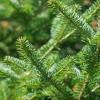 Nana is the dwarf variety of balsam fir (Abies balsamea) tree. These flat-topped, small, globe-shaped evergreen shrubs are used for fencing (mixed borders). The 'Piccolo' has deep green needle leaves. It enhances the beauty of rock gardens. Dwarf balsam fir shrub needs sunlight to grow. It can be 2 feet tall and 3 feet wide. It needs regular supply of water. If the weather is hot, you should supply water more often. Once the root system is developed, you may water it weekly. This shrub does not produce flowers, but the dense, dark green needles (foliage) are beautiful enough to enhance the beauty of your garden.Japanese Yew
Nana is the dwarf variety of balsam fir (Abies balsamea) tree. These flat-topped, small, globe-shaped evergreen shrubs are used for fencing (mixed borders). The 'Piccolo' has deep green needle leaves. It enhances the beauty of rock gardens. Dwarf balsam fir shrub needs sunlight to grow. It can be 2 feet tall and 3 feet wide. It needs regular supply of water. If the weather is hot, you should supply water more often. Once the root system is developed, you may water it weekly. This shrub does not produce flowers, but the dense, dark green needles (foliage) are beautiful enough to enhance the beauty of your garden.Japanese Yew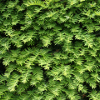 Japanese plum yew (Cephalotaxus harringtonia) is known for its dark green muscular foliage. It grows well in full or partial sun. Some varieties grow into a mound-like structure. These spreading shrubs are useful for shade as well as hedges. Deer do not eat plum yews. The plants require moist and well-drained soil. The height and spread of this plant can be about 2 - 3 feet. The branches are arched up and out. These plants are grown for their lustrous and dark green foliage (flat needles). In spring, newly developed and glossy lime green leaves add to the beauty of the garden. These plants grow slowly, and need regular watering.Spruce
Japanese plum yew (Cephalotaxus harringtonia) is known for its dark green muscular foliage. It grows well in full or partial sun. Some varieties grow into a mound-like structure. These spreading shrubs are useful for shade as well as hedges. Deer do not eat plum yews. The plants require moist and well-drained soil. The height and spread of this plant can be about 2 - 3 feet. The branches are arched up and out. These plants are grown for their lustrous and dark green foliage (flat needles). In spring, newly developed and glossy lime green leaves add to the beauty of the garden. These plants grow slowly, and need regular watering.Spruce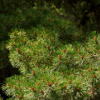 These days, dwarf hybrid varieties of tall spruce trees are easily available, e.g. Dwarf Alberta spruce shrubs, Norway spruce, White spruce, Serbian spruce, etc. They are known for their eye-catching looks. Dwarf Alberta spruce shrubs have a "Christmas tree" shape. You may use it as an accent specimen. These shrubs require very little care. Dwarf Norwegian spruce may be 3 - 4 feet tall, and the branches may spread up to 4 - 5 feet. It requires well-drained soil and full sun. You may use these shrubs for a border. Well grown plants can withstand short periods of drought. Mountain laurel, hydrangea, holly, yew, chokeberry are other shrub examples to make beautiful hedges. They are commonly used to hide stone foundations of houses. Almost all types of evergreen shrubs are popular because they require minimum maintenance. With occasional pruning, you can make them grow in whatever shape you want.
These days, dwarf hybrid varieties of tall spruce trees are easily available, e.g. Dwarf Alberta spruce shrubs, Norway spruce, White spruce, Serbian spruce, etc. They are known for their eye-catching looks. Dwarf Alberta spruce shrubs have a "Christmas tree" shape. You may use it as an accent specimen. These shrubs require very little care. Dwarf Norwegian spruce may be 3 - 4 feet tall, and the branches may spread up to 4 - 5 feet. It requires well-drained soil and full sun. You may use these shrubs for a border. Well grown plants can withstand short periods of drought. Mountain laurel, hydrangea, holly, yew, chokeberry are other shrub examples to make beautiful hedges. They are commonly used to hide stone foundations of houses. Almost all types of evergreen shrubs are popular because they require minimum maintenance. With occasional pruning, you can make them grow in whatever shape you want.
Copyright © www.100flowers.win Botanic Garden All Rights Reserved